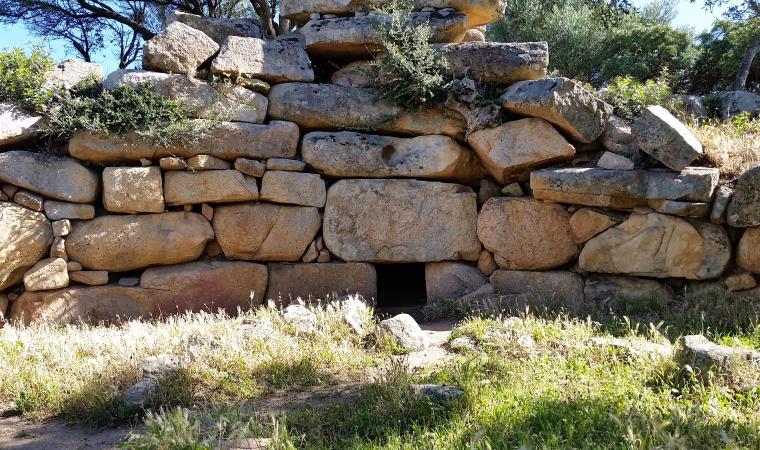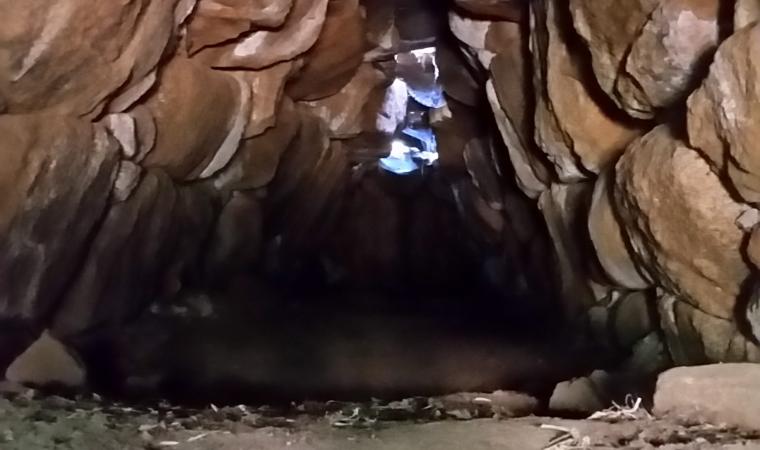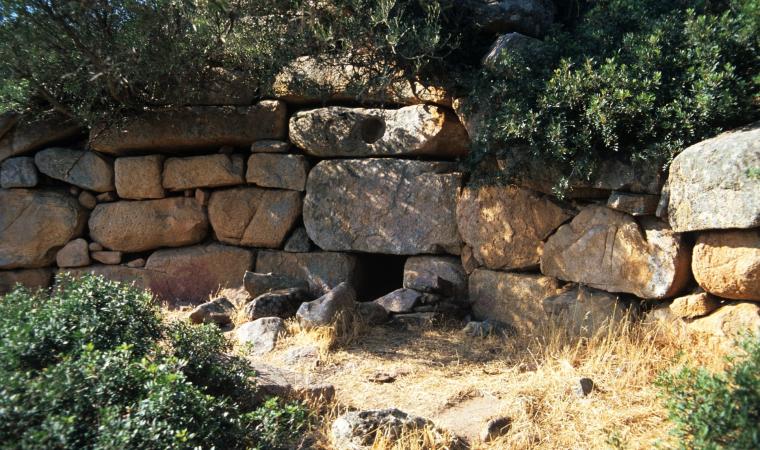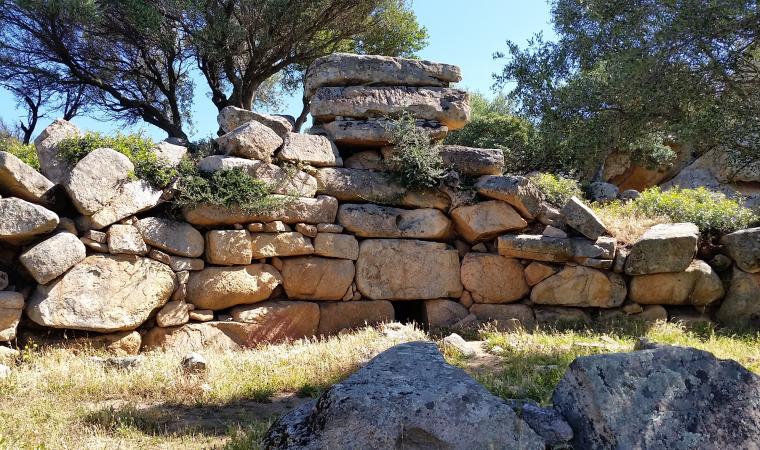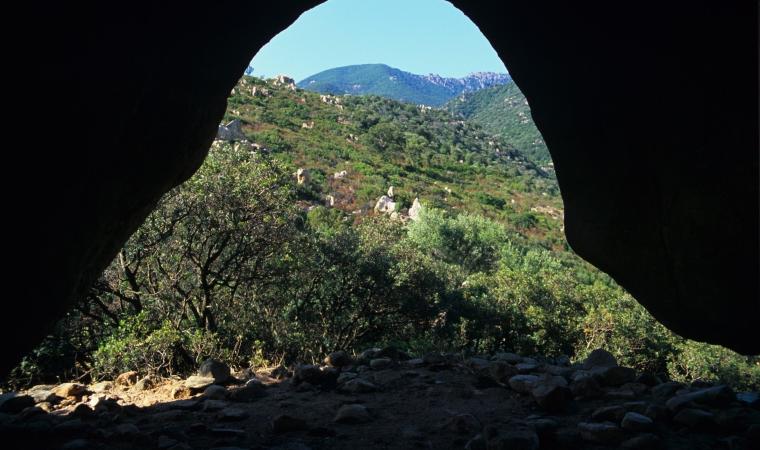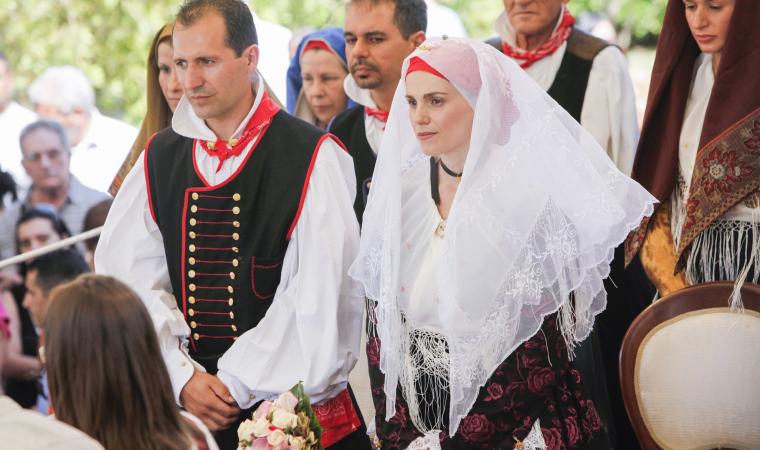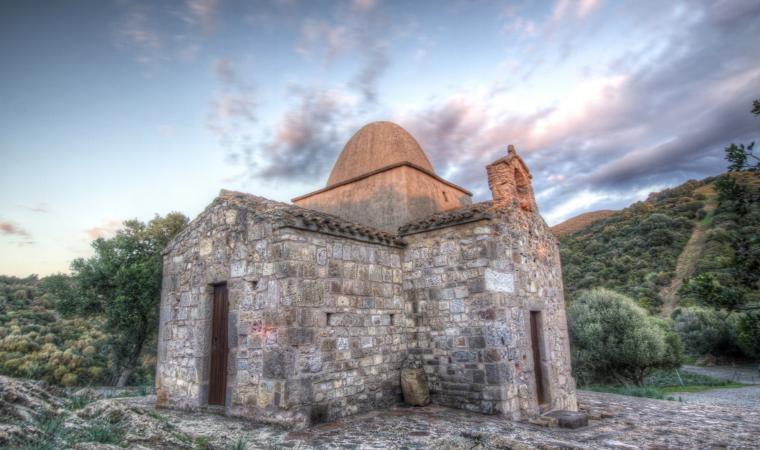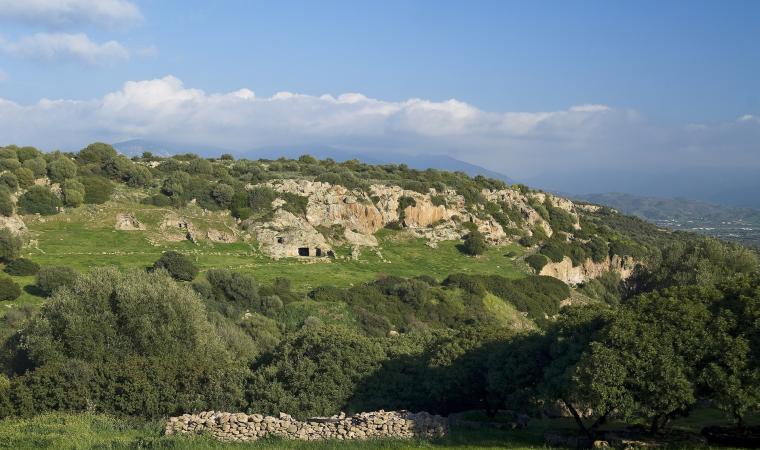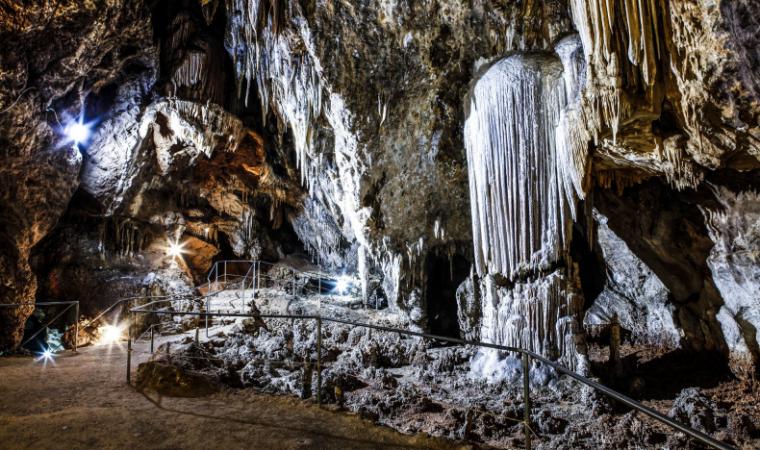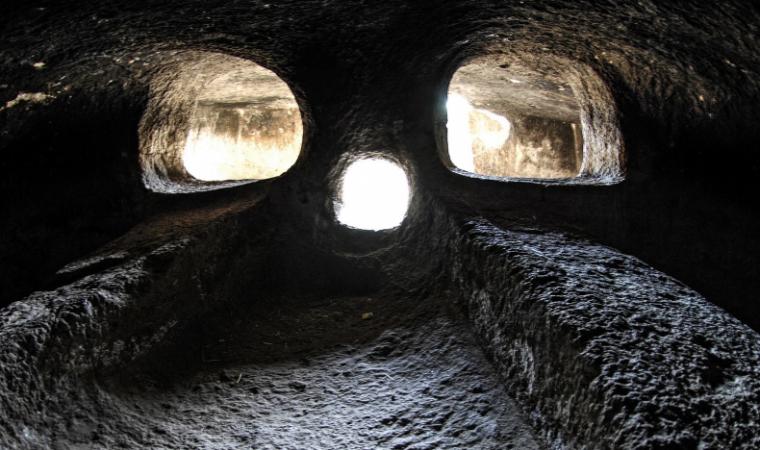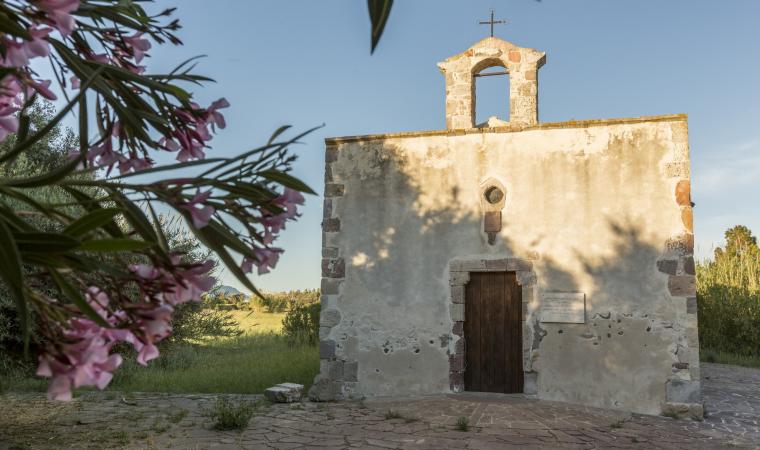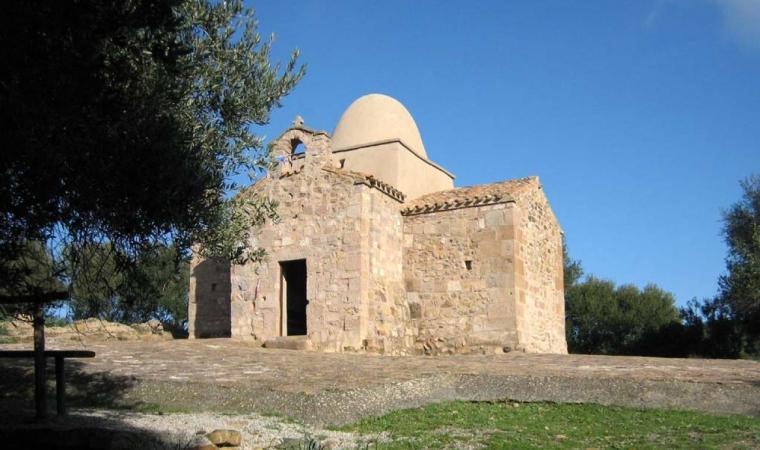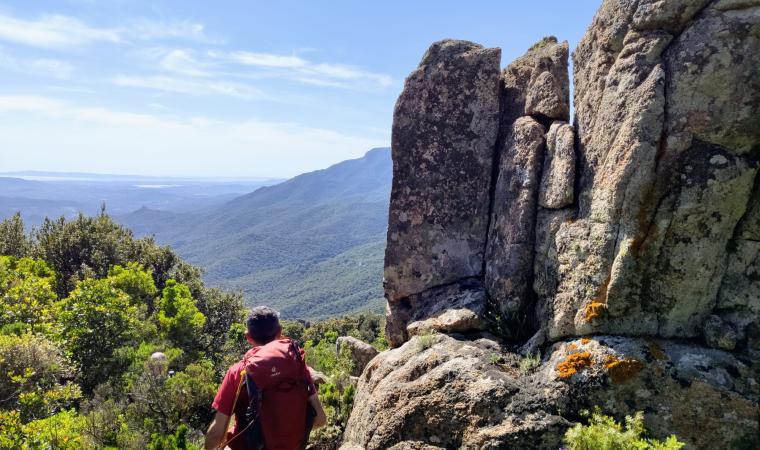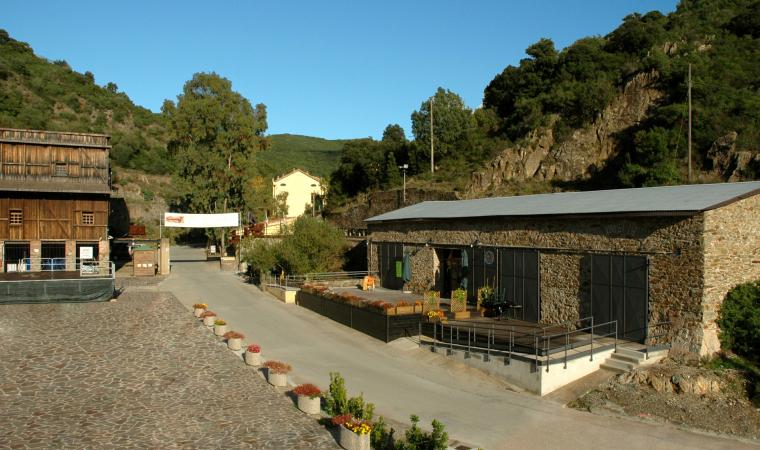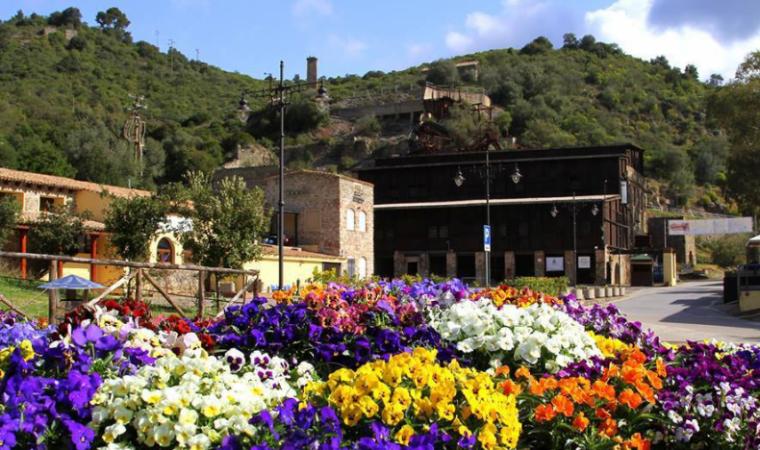It’s one of the most evocative archaeological sites in the lower Sulcis, rich in local legends, where natural shelters, cyclopean walls, and granite monuments blend seamlessly into a wildly beautiful landscape. Sa Fraigada is a prehistoric site located in Barrancu Mannu, in the countryside near Santadi. Once enclosed by a massive stone wall, the eight-hectare area unfolds with terraces, megalithic walls, hut foundations, a protonuraghe, a curious tafone, and the most iconic archaeological find in the Santadi area: the Giants’ Tomb of Sa Fraigada, one of the best preserved in all of Sardinia.
The tomb goes by many names—locals call it sa Tuta, but you might also hear Tomb of Barrancu Mannu or Tomb of Tuerredda. Built between the Middle and Recent Bronze Age—probably around 1300 BCE—it’s made of large, roughly hewn granite blocks arranged in uneven rows. Shaped like a bull’s head, the tomb stretches about 18 meters, with a semicircular 15-meter-wide exedra. At its center is a square entrance, framed by a hefty architrave. From the right arm of the exedra extends a wall enclosing a space likely used for funeral rites.
The stories surrounding the tomb are as captivating as the site itself. Elders in the village speak of incubation rituals, where people would fall into a deep, visionary sleep inside the tomb. Others say the place could heal the mind—treating sadness or nervous breakdowns. Children were warned: if you heard voices or saw strange shadows, it might be the guardian spirit of the schisorgiu, the hidden treasure. If you managed to catch the spirit, legend has it, it would reveal where the treasure was buried. Wandering through this Mediterranean scrubland carved by streams, you’ll notice prehistoric walls that might date back to the Monte Claro culture (2800–2300 BCE). In some places, the builders cleverly used natural rock formations. On a nearby hill known as sa roca de Luciferu, a likely early nuraghe rises across six terraces: the first three form the outer defenses, while the main towers were built on the upper levels. Below, remnants of a village stretch between granite outcrops—you can still make out clusters of dwellings.
Right next to the Giants’ Tomb, you’ll find another striking feature: sa gruta fraigada, a cavity carved by the elements and shielded by an elongated boulder. Bits of masonry suggest it was once used as a ritual or funerary space. And if nature-made wonders are your thing, don’t miss the Is Zuddas caves, just a short drive from Barrancu Mannu—stepping inside feels like wandering through a fantasy realm.
The archaeological heritage of Santadi—also famous for Carignano wine and the traditional Matrimonio Mauritano (the 'Mauritano' Wedding) —includes the Phoenician-Punic citadel of Pani Loriga, along with fascinating artifacts preserved at the Archaeological Museum.


